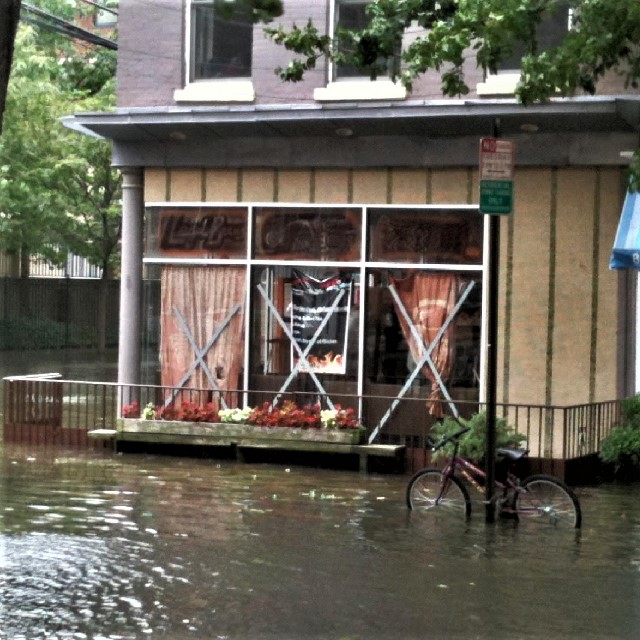Will Climate Change Send Life Insurers' Real Estate Assets Up in Smoke?

What You Need to Know
Life insurers have about $1 trillion in real estate-related assets.
FIO wonders what floods, wildfires and windstorms could do to those assets.
The agency would like to see climate changed factored into insurer risk-based capital ratios.
The Treasury Department’s Federal Insurance Office wants life insurance companies to take a look at what climate change could do to their $1 trillion in real estate-related assets.
Six banks have already worked with the Federal Reserve System to test what floods, hurricanes, wildfires and other climate-related calamities could do to their portfolios of real estate, mortgages and mortgage-backed securities, officials say in a new report on insurance supervision and regulation of climate-related risks.
FIO officials suggest in the report that insurance regulators should help life insurers do something similar with their investment portfolios.
“Real estate may be vulnerable to credit risk if increases in the frequency and severity of climate-related disasters lead to a decrease in borrowers’ ability to repay or service their debt and/or to declines in real estate asset values,” officials warn.
What It Means
Real estate-related assets directly and indirectly support your clients’ life insurance policies and annuities.
FIO officials wonder what climate change could do to those assets.
Federal Insurance Office
Congress created the Federal Insurance Office when it was drafting the Dodd-Frank Act.
States handle most regulation of insurers.
FIO is supposed to help federal financial services monitor insurers and avoid a repeat of the kind of conditions that contributed to the 2007-2009 Great Recession, when problems with derivatives trading at an arm of American International Group shook the world’s financial system.
The Report
FIO prepared the report in response to an executive order issued by President Joe Biden.
The order calls for FIO “to assess climate-related issues or gaps in the supervision and regulation of insurers… and to further assess, in consultation with states, the potential for major disruptions of private insurance coverage in regions of the country particularly vulnerable to climate change impacts.”
Much of the report focuses on property and casualty insurance risk. But said climate change could hurt life and annuity issuers, too.
“State insurance regulators and the NAIC are increasingly focused on incorporating climate-related risks into supervision and regulation, but in most cases, their efforts remain at a preliminary stage,” FIO officials said.
The Future
One way to get insurers’ attention would be to put charges related to flood risk and other types of climate-related risks into insurers’ risk-based capital ratios, FIO officials said.
They recommended the National Association of Insurance Commissioners, a group for state insurance regulators, continue and expand existing efforts to encourage insurers to see how different climate-related scenarios might affect them.
The NAIC should work with insurers, modeling firms and FIO to develop insurance-specific datasets applicable to the United States, and it should also try to be more transparent about the modeling, data and assumptions used in climate-related scenario analysis, officials added.
Credit: Allison Bell/ALM
The Treasury Department’s Federal Insurance Office wants life insurance companies to take a look at what climate change could do to their $1 trillion in real estate-related assets.
Six banks have already worked with the Federal Reserve System to test what floods, hurricanes, wildfires and other climate-related calamities could do to their portfolios of real estate, mortgages and mortgage-backed securities, officials say in a new report on insurance supervision and regulation of climate-related risks.
FIO officials suggest in the report that insurance regulators should help life insurers do something similar with their investment portfolios.
“Real estate may be vulnerable to credit risk if increases in the frequency and severity of climate-related disasters lead to a decrease in borrowers’ ability to repay or service their debt and/or to declines in real estate asset values,” officials warn.
What It Means
Real estate-related assets directly and indirectly support your clients’ life insurance policies and annuities.
FIO officials wonder what climate change could do to those assets.
Federal Insurance Office
Congress created the Federal Insurance Office when it was drafting the Dodd-Frank Act.
States handle most regulation of insurers.
FIO is supposed to help federal financial services monitor insurers and avoid a repeat of the kind of conditions that contributed to the 2007-2009 Great Recession, when problems with derivatives trading at an arm of American International Group shook the world’s financial system.






